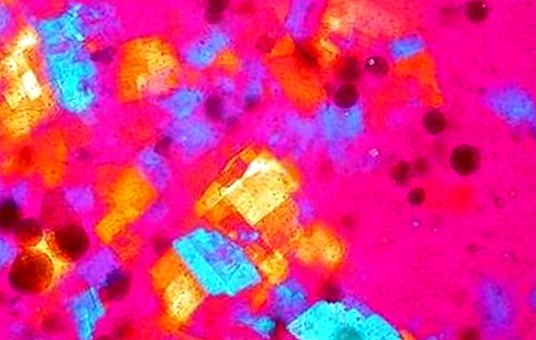Billings or cervical mucus method: how is it, what is it for and disadvantages
The Billings ovulation method or cervical mucus method It is considered a natural contraceptive because it is used to regulate the birth rate without the need to use hormones or devices placed in the uterus.
Thanks to the characteristics of the cervical mucus during the woman's cycle, it is possible to deduce her fertile period and when it would be necessary to maintain relationships in order to become pregnant.

Today many women rely on this method to calculate their next ovulation, it is a reliable method and without interventions, the only thing that women have to learn is to notice the changes that occur during the fertile days.
The billings method It is considered equal or more reliable than any other method such as contraceptives that offer 99% effectiveness.
How to use the Billings method to get pregnant?
If you want to learn to notice the changes that occur in the cervical mucus during the cycle, this method is very easy and reliable, you just have to know the characteristics of each mucus and have relationships during the most fertile days.
To begin with, during the woman's cycle it is necessary to know that, when there is dryness just after the period and before her arrival, the woman is infertile, however when the woman approaches ovulation her most fertile period begins. humidity its main characteristic.
In order to explain the billings method correctly we will take as an example a cycle of 28 days, they can be of 30 or of 26 if it is the case.
During menstruation the woman is usually infertile and the days when she menstruates that can vary between 2 and 5 days will be her infertile period.

From there until the days before ovulation the woman will be infertile so there will be no mucus that indicates fertility.
If the cycle of the woman is of 28 days, just in the middle of the cycle, ovulation will be effective but it will be a few days before when the neck of the uterus begins to fill with white and thick mucus.
Fertile days range from the days before ovulation and two days after ovulation, the type of mucus will change and will be the transparent and elastic flow which will indicate ovulation.
As ovulation approaches the thick, white mucus will change to whitish or yellowish and in more quantity, on the same day of ovulation you will notice how that mucus is more transparent and elastic, you will notice it slippery when urinating and clean with the paper .
As the days go by after ovulation, the cervical mucus will disappear again during this phase called lute, which will be essential for there to have been a fertilization and implantation in the uterus.
The calendar of fertile days according to the Billings method
According to the calendar of fertile days according to this method, we can establish the following:
- Dry or safe days:starting from the first day of the period, those known as safe or dry days would begin after the fourth or fifth day since menstruation began.
- Fertile period:after these four or five days (that is, around day 9 or 10 after the beginning of the period), the fertile period begins, when the woman begins to secrete cervical mucus. This period will last up to 24 hours after the ovum has been released. That is, until day 16, being the days of greatest fertility on days 14 and 15.
- Dry or infertile days:They occur after the fertile period, and last until the woman starts again with menstruation.

Is it really useful to avoid pregnancy? And to get pregnant?
We must bear in mind that this apparently contraceptive method has an estimated effectiveness percentage of around 30%, according to some scientific studies. That is to say, although it is considered a non-invasive method and much more economical than artificial methods of contraception, with this method the percentage of pregnancies is very high.
The reason is quite evident: it is a method that demands a lot of rigor and discipline from the woman, since she must follow and observe her menstrual cycle and know how to identify when she is ovulating and when she is not. In fact, It is not an appropriate method for women with an irregular menstrual cycle.
In addition, we can not forget something fundamental. And is that the menstrual flow is not always regular, so that the woman may think that she has already ovulated when in fact she has not done it, and vice versa. This article is published for informational purposes only. It can not and should not replace the consultation with a Physician.We advise you to consult your Trusted Doctor. ThemesConception


